Cell Phones for Seniors: A Complete Guide to Mobile Phones
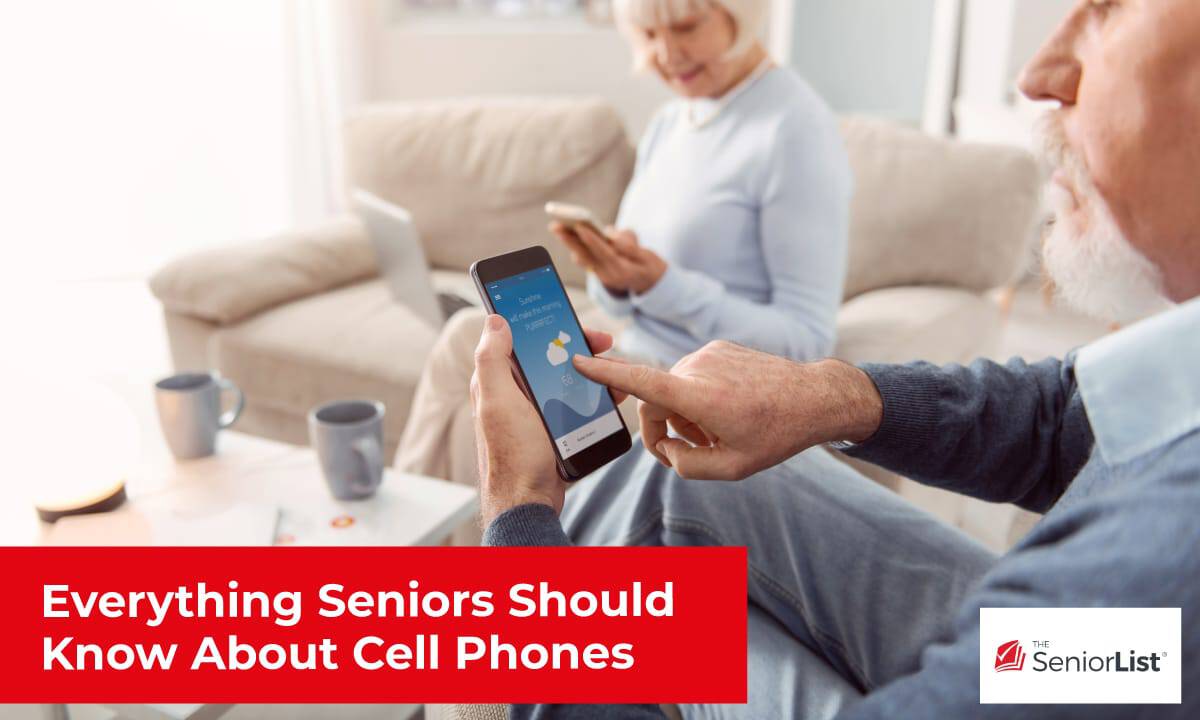
Even if they spend most of their time indoors, older adults need the ability to quickly and easily communicate with family, friends, and medical personnel. While landline phones were once a standard fixture of American homes, cell phones have quickly usurped them as the most efficient way to keep in touch.
In this guide to cell phones for seniors, we’ll walk through the basics of purchasing cellular service, both phones themselves, and the variety of plans and carriers at your disposal. We’ll also highlight several of our favorite options that offer discounted services for older adults.
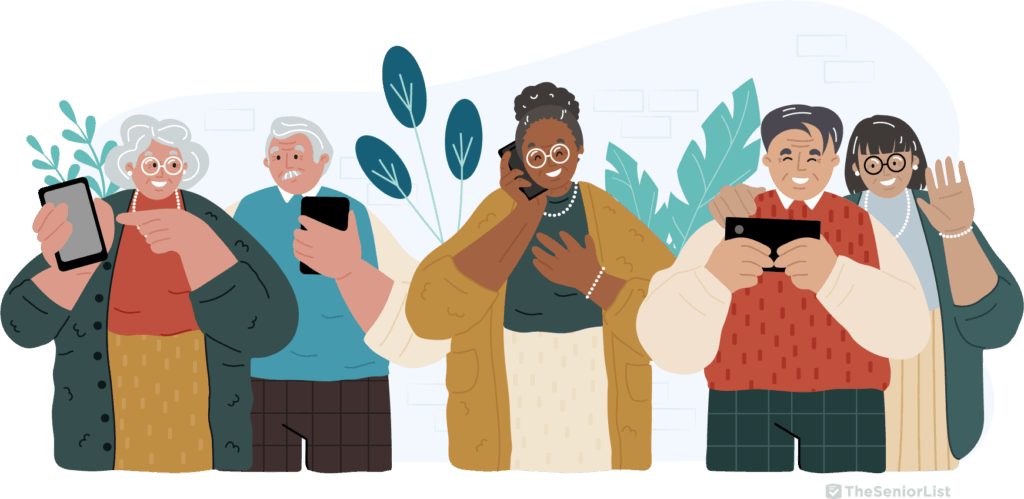
Why Do Seniors Need Cell Phones?
As of 2024, over 90 percent of people over 65 own a cell phone of some kind. Cellular devices allow people to make and receive phone calls from just about anywhere. Unlike most home phones, they also allow people to save important numbers and block unwanted callers. Some devices feature alarm clocks and reminder apps for prescriptions and doctor’s appointments. In fact, studies confirm that text message reminders significantly improved the average pick-up time for pharmacy prescription pick-ups.
Pro Tip: If you’re looking to save money on a cell phone, check out my list of cellular discounts for seniors.
The Best Cell Phones for Seniors
With so many cell phones out there, it can be difficult to know where to begin looking. For starters, I’d recommend checking out our rundown of the best cell phones for seniors. Additionally, we’ve compiled lists of our favorite cell phones for all types of needs:
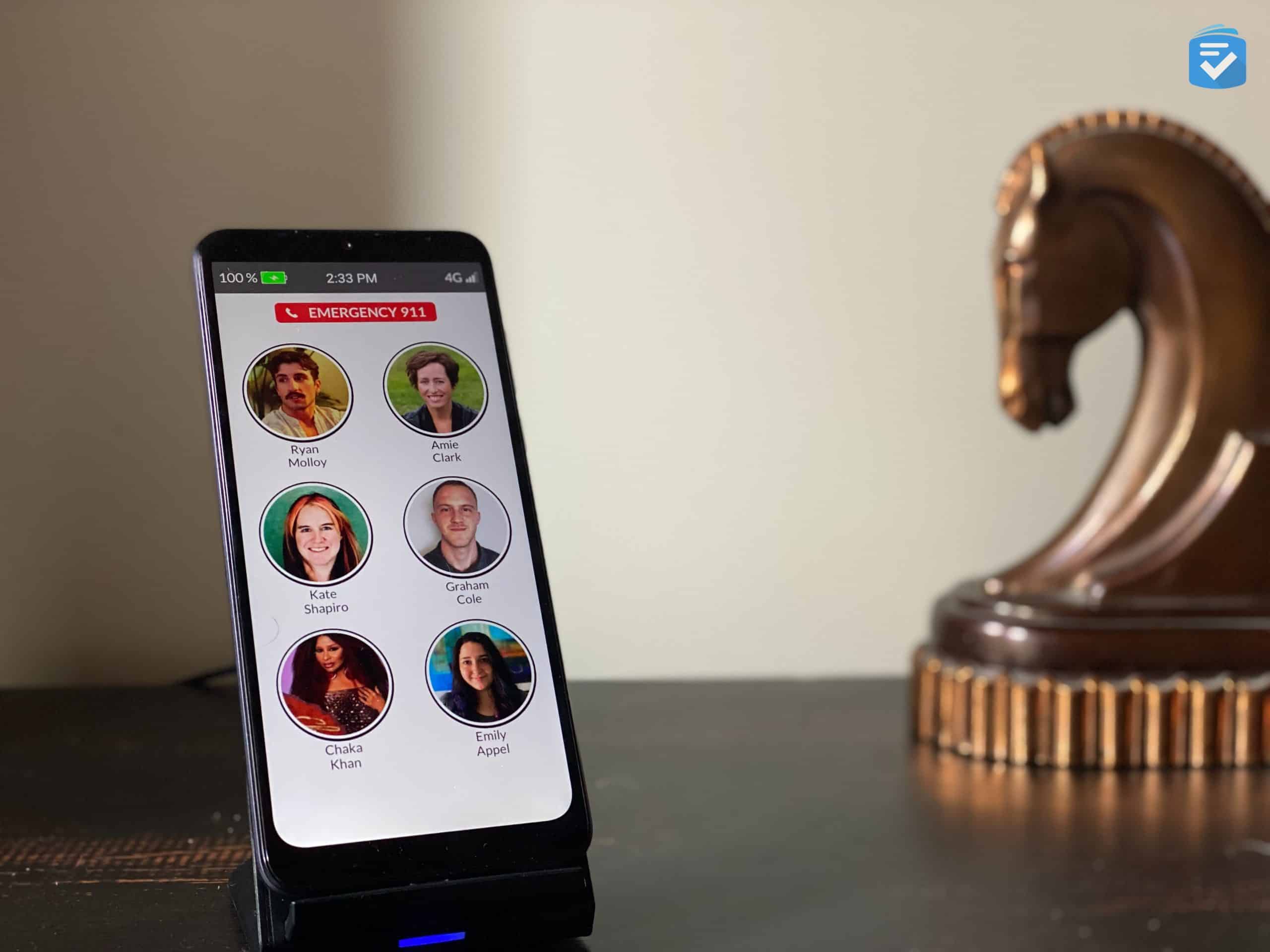
- Best 5G Phones for Seniors February 21, 2025
- Best Affordable Phones for Seniors March 10, 2025
- Best Android Phones for Seniors February 21, 2025
- Best Apps for Seniors February 21, 2025
- Best AT&T Phones for Seniors February 25, 2025
- Best Big Button Phones February 25, 2025
- Best Cell Phones for Hearing-Impaired People February 25, 2025
- Best Cell Phone for People with Dementia February 25, 2025
- Best Cellular Plans for Seniors March 20, 2025
- Best Flip Cell Phones for Seniors March 31, 2025
- Best iPhones for Seniors February 25, 2025
- Best Prepaid Cell Phones for Seniors March 6, 2025
- Best Samsung Phones for Seniors March 6, 2025
- Best Smartphones for Seniors March 28, 2025
- Best Unlocked Cell Phones for Seniors March 6, 2025
- Best Voice-Activated Phone for Seniors March 6, 2025
- Easiest to Use Cell Phones for Seniors March 31, 2025
Our Favorite Cell Phone Plans for Seniors
Several popular cellular providers offer discounts and plans for seniors. Whether you're looking for a cell phone plan for $20 per month or a network with safety features for older adults, one of these three providers has it. After testing over 20 different cellular providers, these are our top-rated brands.
The Best Cellular Providers for Seniors
In addition to choosing a device, you’ll also have to choose a network to pair it with. Since certain phones are available only through select providers, this can quickly get confusing. Luckily, we’ve compiled handy guides for each of the major cellular providers.
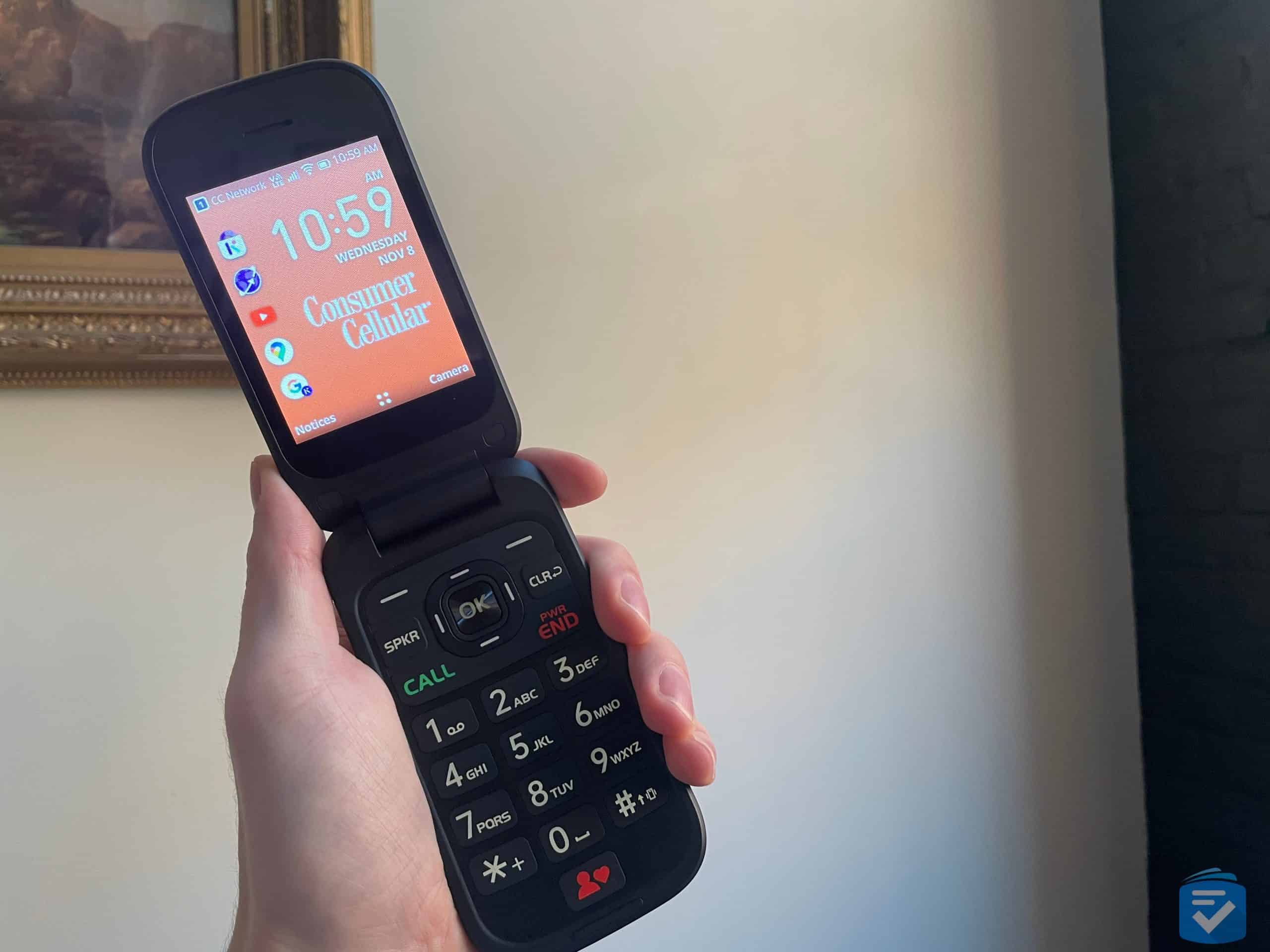
- Affinity Cellular Phones and Plans for Seniors January 13, 2025
- AT&T Phones and Plans for Seniors March 28, 2025
- Consumer Cellular Phones and Plans for Seniors April 5, 2025
- Cricket Phones and Plans for Seniors February 19, 2025
- FreedomPop Phones and Plans for Seniors January 9, 2025
- Google Fi Phones and Plans for Seniors January 7, 2025
- Jitterbug Phones and Plans for Seniors March 21, 2025
- Mint Mobile Phones and Plans for Seniors March 23, 2025
- Optimum Phones and Plans for Seniors January 14, 2025
- Snapfon Phones and Plans for Seniors February 20, 2025
- Spectrum Mobile Phones and Plans for Seniors December 16, 2024
- Straight Talk Phones and Plans for Seniors February 20, 2025
- T-Mobile Phones and Plans for Seniors March 20, 2025
- Tell Phones and Plans for Seniors January 25, 2025
- TracFone Phones and Plans for Seniors February 20, 2025
- Ultra Mobile Phones and Plans for Seniors January 16, 2025
- Verizon Phones and Plans for Seniors February 20, 2025
- Visible Wireless Phones and Plans for Seniors February 20, 2025
- Xfinity Mobile Phones and Plans for Seniors December 16, 2024
Additionally, if you’re looking for side-by-side comparisons of these brands, we’ve got you covered:
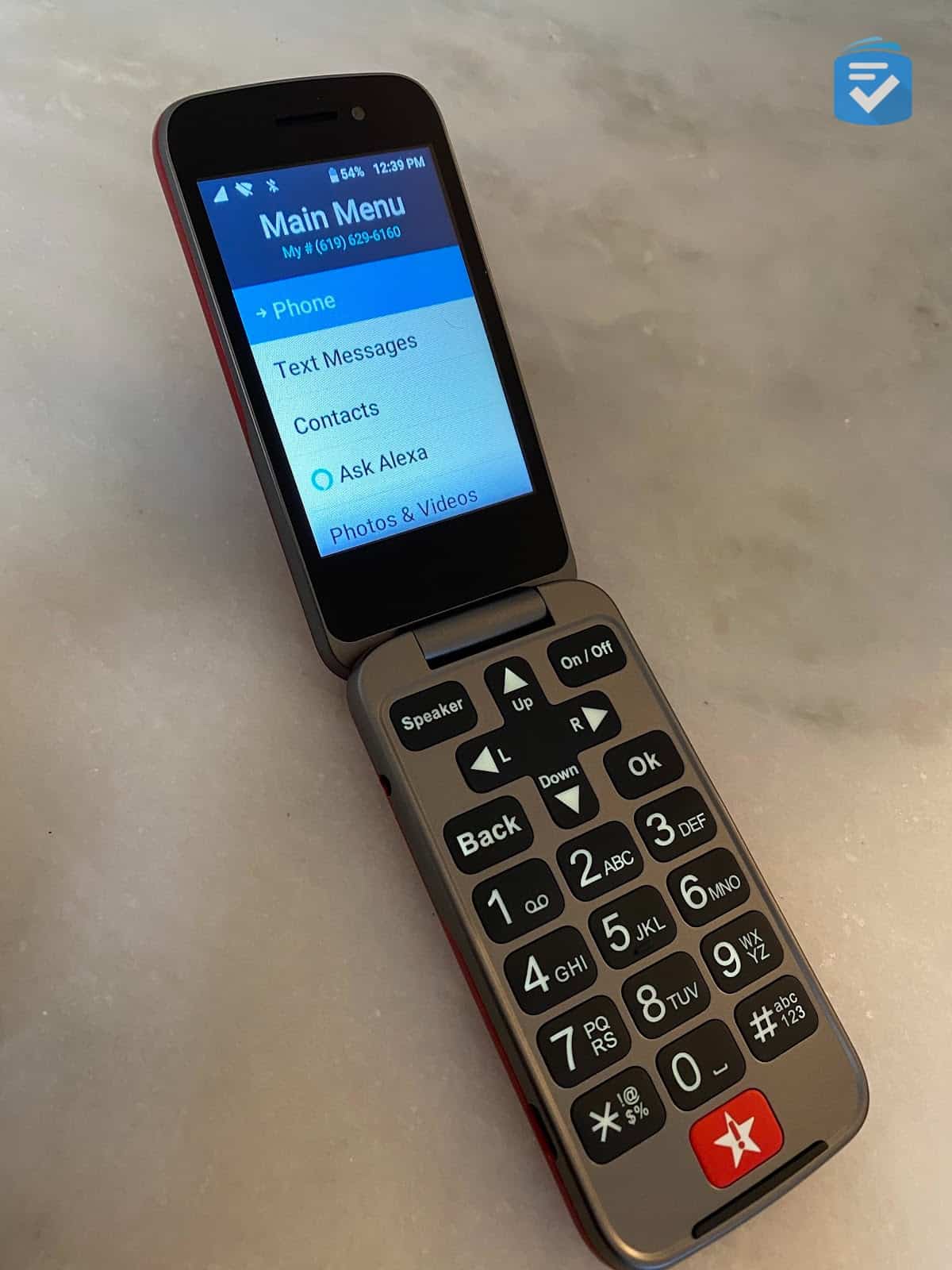
- Consumer Cellular vs AT&T February 10, 2025
- Consumer Cellular vs Cricket Wireless February 10, 2025
- Consumer Cellular vs Lively February 10, 2025
- Consumer Cellular vs Verizon March 21, 2025
- Consumer Cellular vs Visible Wireless February 10, 2025
- Consumer Ceullar vs Mint Mobile February 10, 2025
- Consumer Cellular vs T-Mobile March 23, 2025
- Consumer Cellular vs Straight Talk March 31, 2025
- Consumer Cellular vs Tracfone March 21, 2025
- Snapfon vs Lively July 30, 2024
- Tracfone vs Lively July 30, 2024
Types of Cell Phones for Seniors
Cell Phones come in many different shapes and sizes. Let’s take a closer look at these categories.
Flip Phones
Flip phones open and close on a hinge to reveal a small screen and keyboard. These phones have a simple design, a long battery life, and are easy to use. These phones are a good choice for older adults who just want to talk on the phone, text, or take a few basic photos. Flip phones can sometimes connect to the internet, but due to their smaller screens, this process is often a bit cumbersome.
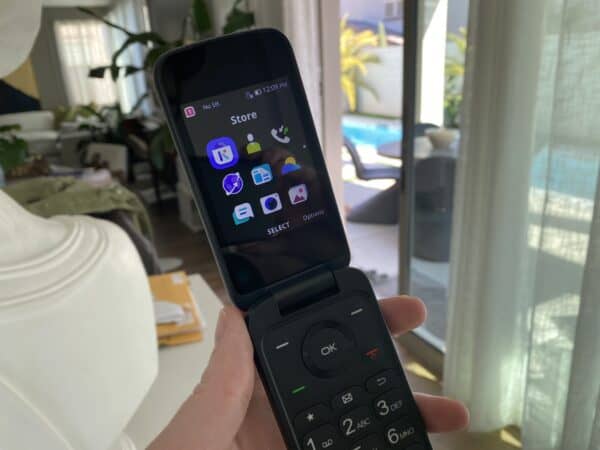
Block or Slider Phones
Block and slider phones are similar in functionality to flip phones without a “flip” feature, making them ideal for those with dexterity concerns. Block-style phones feature a keyboard and screen on one side. Slider phones have a large screen that slides up to reveal a full keyboard that is larger than most phones, making it a good choice for those with vision issues.
Smartphones
These are large touchscreen phones that can make calls, send text messages, and access the internet. Smartphones are large devices that allow for big text and buttons, so those with vision impairment or limited dexterity can easily use the device to read texts, check emails, and do just about anything else you could do with a computer. Smartphones can help older adults connect to family, close friends, and medical alert systems.
There are many different kinds of smartphones with different interfaces and capabilities. Smartphones are divided into two main categories: Apple and Android. It’s important to research each operating system, their differences, and pros and cons before choosing a smartphone.
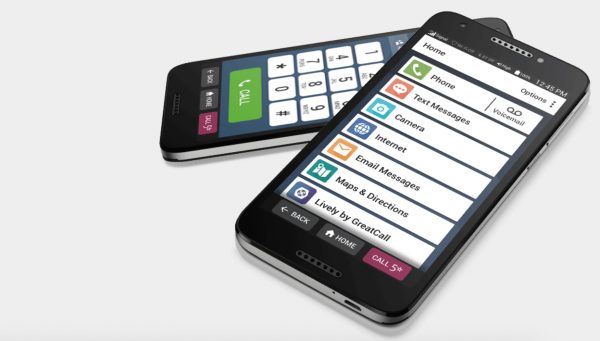
Cell Phone Features
Cell phones have a variety of features that can make life easier for an older adult. While flip or block phones are easy to use, smartphones have more advanced functionality that helps users connect with friends and the internet. Here are a few features that are particularly relevant to older adults.
Larger Buttons and Screens
Flip or block phones often feature larger buttons and simple interfaces. Smartphones generally have oversized screens and large buttons. Nearly all cell phones offer font size adjustment options to ease eye strain.
Internet Access
The internet makes it easy to check the weather, emails, calendar notifications, the news, sports scores, and more. This allows older adults the ability to connect with friends, family, and the world at large. Those who value this connectivity should choose a phone with an internet plan.
Simple Menus
Individuals who prefer flip or block phones can access simple menus to easily execute the task at hand. Others can add or delete menu items from their smartphone so they are not bombarded by a large number of options.
Higher Volume Options
Those with hearing loss can find phones with louder speakers or even Bluetooth functionality to connect their phones to hearing aids.
Voice Typing and Voiceover Features
Voiceover allows the phone to read aloud the text on the screen when a message is received, and there are applications that allow users to dictate texts and emails. Voice assistants like Siri allow for voice commands so users don’t need to use keyboards to interact with phone features.
Magnifying Cameras
Cell phones often have cameras with a zoom feature to magnify the size of whatever they’re pointed at, making it a handy tool for reading small print such as books and restaurant menus.
Closed Captioning
Closed caption features are common on smartphones so that adults with hearing impairment who like to stream videos on Netflix or YouTube can read along with ease.
Alerts, Alarms, and Timers
Even basic phones typically have an alarm or timer feature that can remind users to take medications or leave for doctor’s appointments.
Emergency Functions
Some phones connect with medical alert devices or have special plans to alert caregivers or medical personnel in case of an emergency. Some phones, like the devices from Lively, even have emergency buttons in case of a fall or other health event.
GPS Location
GPS features are essential for those who need help finding places or driving directions. Some apps use GPS to allow emergency personnel or family members to find the user if necessary.
Fitness, Wellness, and Health Tools
Many smartphone devices have the ability to track fitness routines, steps taken, nutrition information, and more. Other games and apps are designed to increase cognition and memory.
Fingerprint or Face Recognition
Newer smartphone models feature fingerprint and facial recognition as an alternative way of unlocking your phone. This is a fantastic feature for older adults who tend to forget passwords.
Top Flip Phones and Features
| Device | Price | Features |
|---|---|---|
| Jitterbug Flip | $49.99 |
|
| Alcatel GO FLIP | $100 through T-Mobile |
|
| Sonim XP3 | $189.99 |
|
| BLU JOY | $28.87 |
|
Top Smartphones and Features
| Device | Price | Features |
|---|---|---|
| Jitterbug Smart4 | $149.99 |
|
| Apple iPhone XR | $600 for 64GB, $649 for 128GB |
|
| Snapfon ezTWO3G | $89.99 |
|
| iPhone 11 Pro Max | $1,099 for 64GB, $1,249 for 256GB, $1,449 for 512GB |
|
Cell Phone Insurance and Protection Plans
While cell phones these days are designed to be durable (especially flip and block phones), it’s possible that they could fall and break. While cases and screen protectors may help protect your phone, there is still a chance a smartphone screen may shatter or the hardware may malfunction.
These issues may be very costly to repair. A shattered screen can range anywhere from $100 to $300 depending on the phone and the size of the screen. Other issues, such as malfunctioning buttons or water damage, can cost $100 or more to repair. Smartphones especially can be very sensitive, and some hardware issues may require a full replacement. If a phone is lost or stolen, a buyer will need to replace the full cost of the phone.

Most major cell phone providers offer insurance products that cover theft, loss, and damage. An extended warranty or insurance plan is smart for those with expensive phone models, while a manufacturer’s warranty may suffice for those that are less expensive.
Cell phone carrier insurance coverage is often made with outside parties such as Assurant or Asurion. Make sure to read the fine print carefully to understand the coverage you are paying for. Lively phones come with a standard one-year warranty for their devices and batteries; however, this does not cover accidental damage.
Apple and Best Buy also offer additional insurance for devices purchased through them.
AppleCare+
AppleCare+ covers two incidents of accidental damage to Apple products every twenty-four months. Express replacement service and 24/7 technical support are available under the plan. You can order a basic plan for $199 for two years or a premium plan with theft/loss protection for $299. Monthly payments are available. This service is a great way to protect your investment in a costly device.
Best Buy
Starting at $8.99 per month, Best Buy’s “Geek Squad” protection plan covers drops, spills, cracks, batteries, wear and tear, mechanical failure, and accessories. This plan is not exclusive to a specific phone and can be purchased for any device.
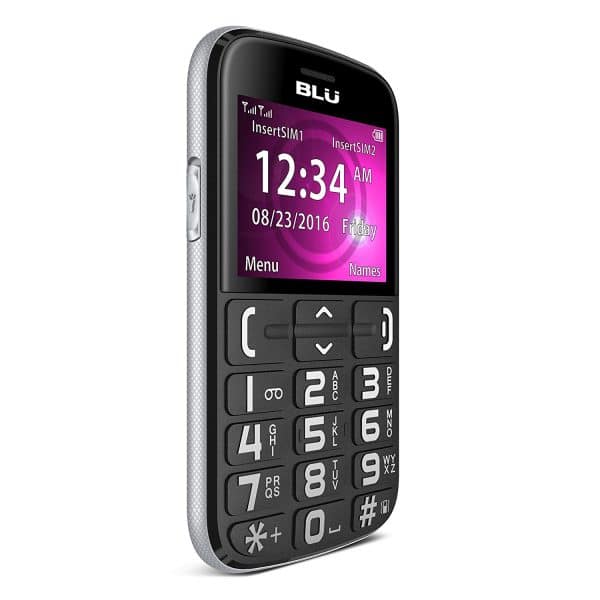
Types of Cell Phone Plans for Seniors
There are many types of cell phone plans to fit every lifestyle. Plans range from inexpensive basic plans for calling and texting to more comprehensive (and expensive) data plans that cover internet usage and video chatting. Here is an overview of the range of plans available:
Pay as You Go (No Contract Plans)
Pay as you go plans allow users to purchase data, texts, and minutes as they need them, meaning there is no long-term contract involved. These plans are perfect for those who don’t use their cell phones much but would like them in case of an emergency.
Flexible Plans
Flexible plans feature a monthly base rate to keep the device in service with a limited allotment of data, minutes, and texts per the contract terms. Once the subscriber reaches the monthly limit, the provider will charge per megabyte of data, number of talk minutes, or texts. This can be pricey if the user racks up a lot of extra phone time. These plans are perfect for those who use their cell phone fairly often but not all the time.
Unlimited Plans
These plans are for those who want to use all of the phone’s features without time or data limitations. Users may talk, text, and use data as much as they would like. However, these plans are more expensive and some services start to “throttle” (or slow down) data usage after users hit a certain threshold. Additionally, unlimited plans often require a longer contract period. These plans are great for people who plan to purchase a smartphone and make use of all its data-heavy features.
55+ Plans
Some cell phone providers offer specific plans and discounts for those over 55. These plans often include extra features such as medical alerts, medication reminders, wellness check-ins, wireless monitoring or more. T-Mobile, Consumer Cellular, and Lively offer cellular plans specific to older adults.

Our Favorite Senior Cell Phone Provider
T-Mobile offers impressive coverage in America and abroad. While most urban and rural areas fall within their coverage range, you should check their coverage map for more details. They are the only major cellular provider that offers comprehensive plans exclusively for those 55 and over. For this reason, I highly recommend T-Mobile to all my clients.
T-Mobile Plans for Seniors
| T-Mobile Plan | Monthly Cost | Features |
|---|---|---|
| Essentials Choice 55 |
|
|
| Go5G Plus 55 |
|
|
| Go5G Next 55 |
|
|
While T-Mobile is a great option for most, I recommend a few other services in case you do not fall within their coverage area. Consumer Cellular has a dozen personalized plans to choose from that combine minutes, texts, and data or a combination of what services you may need. These plans range from $15 to $60 per month. Their low prices, excellent customer service, and flexible contracts make them a good option for older adults with specific cellular needs.
Lively has a variety of plans for users of both flip phones and smartphones. The company also offers health and safety packages that connect users with registered nurses or doctors for on-the-spot medical advice and status updates for caregivers. This plan is useful for those who want to combine their cellular plan and medical alert services into a singular monthly bill.
Conclusion
There are many options available for older adults with varying cellular needs. For those who just want a cell phone in case of an emergency to others who want to FaceTime every day with their friends and family, there is a phone plan out there for you. Before purchasing a cell phone and associated plan, be sure to do your research. Thoughtful research can help you save money, choose between a flip phone or smartphone, and find a plan that serves all your purposes.




